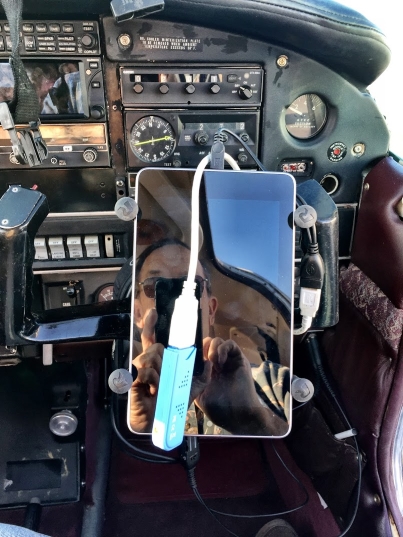RotorDude
Pattern Altitude
- Joined
- Aug 31, 2014
- Messages
- 2,321
- Display Name
Display name:
GliderDude
OK, we know that $130 ADS-B can be built with RTL-SDR USB dongle and a Raspberry Pi, connected to a tablet via WiFi.
But we also know that you can connect the RTL-SDR directly (via OTG adapter) to an Android tablet (not sure about iPad) to display 1090 ADS-B traffic (e.g. see this app), e.g. on Avare moving map display.
So what's missing is the FIS-B and 978 side of things, but since we know that works in principle (since it runs on the Pi), shouldn't it also run directly on the Android tablet? (Yes, different environment but not rocket science.)
BTW, I just tried the 1090 traffic on my Nexus 7 with the RTL-SDR and Avare, and I can see traffic just fine.
So is adding the weather to it that hard? Isn't there supposed to be an app for just about anything today?
The Pi is a cute little device, but consider the reduction of clutter and huge simplification if all you had was the RTL-SDR dongle and antenna connected to the tablet.
Comments?
Edit on 10/16/2015: UAT has now been added with FIS-B support and UAT TIS-B traffic (see later posts) but at this point you have to choose between the two bands (restart required).
But we also know that you can connect the RTL-SDR directly (via OTG adapter) to an Android tablet (not sure about iPad) to display 1090 ADS-B traffic (e.g. see this app), e.g. on Avare moving map display.
So what's missing is the FIS-B and 978 side of things, but since we know that works in principle (since it runs on the Pi), shouldn't it also run directly on the Android tablet? (Yes, different environment but not rocket science.)
BTW, I just tried the 1090 traffic on my Nexus 7 with the RTL-SDR and Avare, and I can see traffic just fine.
So is adding the weather to it that hard? Isn't there supposed to be an app for just about anything today?
The Pi is a cute little device, but consider the reduction of clutter and huge simplification if all you had was the RTL-SDR dongle and antenna connected to the tablet.
Comments?
Edit on 10/16/2015: UAT has now been added with FIS-B support and UAT TIS-B traffic (see later posts) but at this point you have to choose between the two bands (restart required).
Last edited:

